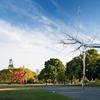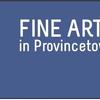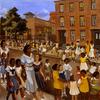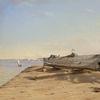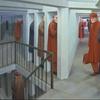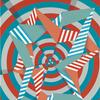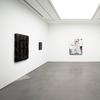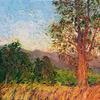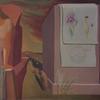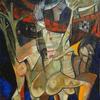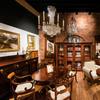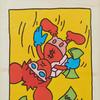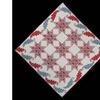All Themes Contemporary Considered in Julie Mehretu Traveling Exhibition
- LOS ANGELES, California
- /
- September 16, 2019
The Los Angeles County Museum of Art (LACMA) presents Julie Mehretu, a mid-career survey co-organized with the Whitney Museum of American Art. Opening November 3, 2019, the exhibition unites 40 works on paper with 35 paintings dating from 1996 to the present by Julie Mehretu (b. 1970, Addis Ababa, Ethiopia). The first-ever comprehensive survey of Mehretu’s career, the exhibition covers over two decades of her artistic evolution, revealing her early focus on drawing, mapping, and iconography and her more recent introduction of bold gestures, sweeps of saturated color, and figurative elements. Mehretu’s examination of the histories of art, architecture, and past civilizations intermingle with her interrogations into themes of migration, revolution, climate change, global capitalism, and technology in the contemporary moment. Her play with scale, as evident in her intimate drawings and large canvases and complex techniques in printmaking, will be explored in depth. Julie Mehretu is curated by Christine Y. Kim, curator of contemporary art at LACMA, with Rujeko Hockley, assistant curator at the Whitney Museum of American Art.
Following its presentation at LACMA, the exhibition will travel to the Whitney Museum of American Art, New York, NY (June 26–September 20, 2020); the High Museum of Art, Atlanta, GA (October 24, 2020–January 31, 2021); and the Walker Art Center, Minneapolis, MN (March 13–July 11, 2021).
“LACMA is very pleased to present this mid-career survey of the artist Julie Mehretu,” said Michael Govan, LACMA CEO and Wallis Annenberg Director. “Mehretu’s work acknowledges history as she draws on past media clippings, Paleolithic cave etchings, non-Western artifacts, architectural renderings, and Eastern calligraphy, which resonate with the images and objects that constitute LACMA’s encyclopedic holdings.”
“Mehretu’s unique form of abstraction is connected to a deep meditation at the crossroads of mapping social and political sites and actions, shifting points of entry, new visual languages, mediated images, and corporeality. Her compositions are at once all-encompassing and destabilizing, offering a radical incoherence, which can trigger multiple experiences and senses,” said Christine Y. Kim. “This exhibition laysout this development, articulation, and connectivity of her work over the past 23 years.”
Julie Mehretu is organized in loose chronological order: 37 of the 40 works on paper will be located on the bridge of BCAM, Level 3; and 35 paintings will be on view in BCAM, Level 1 and BCAM, Level 3. Mehretu has worked in printmaking since she was a graduate student. The BCAM, Level 3 bridge explores the artist’s methodical process of making prints, which includes decisions about line, weight, color, and layering, and further informs her painting practice. While painters often use drawing as a preliminary tool, Mehretu insists that the conventions of her applied drawing remain exposed, a practice that extends from her drawings to printmaking, and from collage to canvas. These works on paper range in medium, and include collage, watercolor, ink, graphite, and colored pencil on paper and Mylar, as well as etching, aquatint, and engraving.
The galleries in BCAM, Level 1 and BCAM Level 3 present the artist’s work in painting from 1996 to the present. In Stadia II (2004) and Black City (2007), Mehretu interrogates sports and military typologies to disrupt modern conceptions of leisure, labor, and order. The coliseum, amphitheater, and stadium in Stadia II represent spaces that are designed to situate and organize large numbers of people but also contain an undercurrent of chaos and violence. While Stadia II is filled with curved lines and a panoply of pageantry such as flags, banners, lights, seating, Black City is more linear and contains references to the military and war, such as general stars and Nazi bunkers. Both works call attention to the ways in which modern culture and the spectacle of contemporary wars, such as the War on Terror and the Iraq War, are connected to imperialism, patriarchy, and power.
Mehretu’s most recent paintings introduce bold gestural marks and employ a dynamic range of techniques such as airbrushing and screenprinting. The works draw on her archive of images of global horrors, crises, protests, and abuses of power, which she digitally blurs, crops, and rescales. Mehretu uses this source material as the foundation for her paintings, overlaying the images with calligraphic sweeps and loose drawings. For example, Conjured Parts (eye), Ferguson (2016) links disembodied anatomy with a site of violence and political strife. The painting began with a blurred photograph of an unarmed man with his hands up facing a group of police officers in riot gear, which was taken during the protests that followed the fatal shooting of Michael Brown in Ferguson, Missouri. Mehretu layered color over a blurry, sanded black-and-grey background. Fuchsia and peachy-pink areas rise from below, while toxic green tones float above like distant skies drawing near. Outlines of eyes, buttocks, and other body parts appear within the graffiti-like marks and black blots that hover over smoky areas, suggesting human activity obscured.
A Julie Mehretu Exhibition Catalogue will be available, edited by Christine Y. Kim and Rujeko Hockley with contributions by Andrianna Campbell, Adrienne Edwards, Thelma Golden, Mathew Hale, Rujeko Hockley, Leslie Jones, Christine Y. Kim, Fred Moten, and Dagmawi Woubshet.

